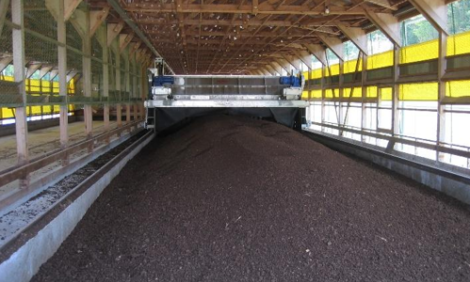



To Be or Not to Be: Mycotoxicosis
Ines Rodrigues, Technical Manager with Biomin, offers insights into the different symptoms and post-mortem findings to specific mycotoxins, serving as a quick guide when problems arise on a poultry farm.'When you hear hoof beats, look for horses, not zebras'. This is the first thing taught to medical students in their first year of training. This proverb applies also to animals and reminds us we should look for the simplest, most common explanation first when attempting to diagnose a disease.
Differential diagnosis is especially difficult in the case of mycotoxin-related problems as symptoms may vary greatly depending on interactions between toxin-, animal- and environmental-related factors. More frequently than not, commodities are contaminated with more than one mycotoxin and this factor alone leads to the occurrence of synergistic effects amongst them. For these reasons, it is simply impossible to make an exact cause-effect relationship between a specific toxin concentration and its symptoms in animals. Nonetheless, mycotoxins are not a new topic and they have been subject of a lot of research within the last few years which has helped the understanding of their mode of action, epidemiology and counteraction.
Table 1 lists the major mycotoxin-producing fungi, the respectively produced mycotoxins and the most important effects caused by these mycotoxins. Many other symptoms and effects have been described for poultry; however, in order to simplify their differentiation only the most distinctive ones have been chosen and will be further explained.

Aflatoxins

Aflatoxin intoxication in poultry leads to clinical signs such as reduced general performance (reduced growth and feed intake, decreased egg production) and paleness of mucous membranes and legs (pale bird syndrome). The most typical lesions are alterations in the liver in terms of colour and size. At post-mortem examination, a friable, yellowish (due to fat accumulation) and enlarged liver with haemorrhages and anaemia can be expected in birds intoxicated with this mycotoxin (Figure 1). The presence of petechial haemorrhages in the musculature of animals might result of higher susceptibility to bruising due to capillary fragility caused by aflatoxins. However, it might be difficult to differentiate the effects of this mycotoxin from those caused by infectious bursal disease (IBD), fatty liver syndrome, malabsorption syndrome, high-energy diets, amiloidosis and fish meal-based diets.
Ochratoxin A

Ochratoxins are among the mycotoxins most toxic to poultry. Renal dysfunction caused by this mycotoxin may be noticed during the bird's life by increased water consumption, thus increased moisture in manure. As with aflatoxins, ochratoxin A may also cause enlargement and colour alteration in the liver of affected animals. However, in the case of the latter mycotoxin, the liver will appear pale rather than yellowish. Nonetheless, the most characteristic change caused by ochratoxin A can be found in the kidneys as they will be severely enlarged and pale in post mortem evaluation (Figure 2).
In laying hens, the presence of ochratoxin A in diets has been related to the increase of blood and meat spots incidence in eggs. However, blood spots inside the egg are also known to be caused by genetic factors, as well as by sudden environmental temperature changes and by aging birds. For both aflatoxin and ochratoxin A intoxication, reduction of bursa is often observed, which explains the severe immunosuppressive effects of these mycotoxins. In general, ochratoxin A post-mortem lesions might be confused with those caused by aflatoxins, visceral gout, infectious bronchitis, infectious bursal disease, citrinin toxicity, sodium intoxication, calcium nephropathy, water deprivation, vitamin A deficiency, malabsorption syndrome, bacterial pyelonephritis and coccidiosis.

Fusarium Toxins
Regardless of the mycotoxin (deoxynivalenol, T-2 toxin, fumonisins), general effects following ingestion of fusariotoxins-contaminated diets include reduced weight gain and impaired feed conversion rate along with an increased susceptibility to diseases.
Type-A trichothecenes such as T-2 toxin and diacetoxyscirpenol (DAS) produce caustic and radiomimetic patterns of disease, which include ulceration, crusting and necrosis of epithelium which comes in contact with the toxins (usually oral mucosa, Figure 3, but sometimes feet and legs). Consequently at post-mortem, lesions can vary from reddened gastro-intestinal mucosa to thickened and roughened ventricular lining, digestive ulcers, gizzard erosion (Figure 4) and intestinal haemorrhages.

Unfortunately, the negative effects of trichothecenes are much more extensive as these toxins are known to primarily inhibit protein synthesis followed by a secondary disruption of DNA and RNA synthesis. These facts further explain the severe toxicity of both type A and type B trichothecenes in actively dividing cells thus their severe negative impact in the gastrointestinal tract, mucosa, feathering (Figure 5) and immune function.
Especially in terms of oral lesions and gizzard erosion, a proper diagnosis is of crucial importance as other agents may cause similar symptoms. Gizzard lesions alone can be caused by several different factors, namely the use of copper sulphate in diets at inclusion levels higher than 1kg per tonne; the inclusion of improperly processed fishmeal at levels higher than two per cent; vitamin B6 deficiency and adenoviruses. Furthermore, some amino acids found in ingredients of animal origin may degrade into biogenic amines which have been associated with the occurrence of gizzard erosion and poor performance in broilers.

Diagnostic Tools
Although difficult to diagnose, the onset of mycotoxicosis on a farm is often related to a new batch of feed. Mycotoxin analysis of the feed (by high performance liquid chromatography - HPLC) or to commodities (by ELISA or HPLC) must be performed in case of suspicion of the presence of mycotoxins. This will provide valuable information which can be gathered to that collected by observation of clinical signs and by necropsy exams. If other diseases are to be ruled out then histopathology, bacterial and viral cultures and serology should be performed.
Prevention is Better (and Cheaper) than Cure
Quite frequently the effects of mycotoxins in animals are subclinical and therefore are overlooked by farm technicians. If money losses are already existent in case of subclinical mycotoxicosis, they escalate when symptoms are observed. These include not only the loss of genetic potential but the investment which must be done to treat symptoms or underlying illnesses.
Prevention can be done by the use of a proper Mycotoxin Risk Management tool which adsorbs and/or biotransforms mycotoxins, thus eliminating their toxic effects for the animals, while guaranteeing liver and immune protection.
Mycofix® Product Line combines the three strategies - Adsorption, Biotransformation and Bioprotection – which work together for preventing the hazardous effects of mycotoxins to hit your flock!
March 2013








